 |
Hempstead |
|
Village History |
||||||||||||
|
what3words location - ///backpack.corporate.battling |
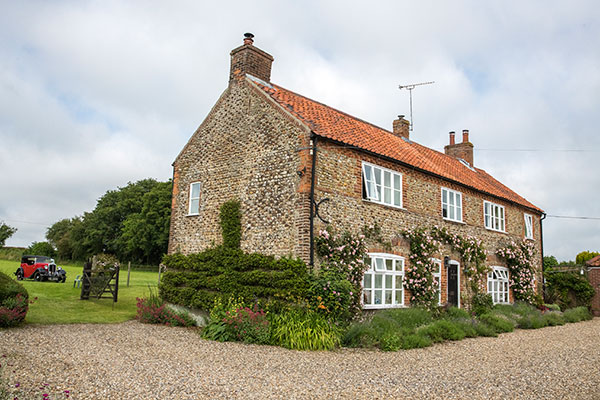
Garwood House was built between 1728 and 1750 in the area of Hempstead, then known as Headscroft, the latter date being when it was first noted on a map. |
Garwood House was named after Humphrey Garwood, whose story appears below -
In Parson Woodforde's Norfolk Diaries there appears the sad story of his maidservant Sukey of whom he was particularly fond. Unfortunately, in August 1776 she had to confess to her employer that she was pregnant by one “Humphrey”. Though Parson Woodforde may well have suspected his unattractive nephew Bill (whom he sent away from the house shortly afterwards) there was no forced marriage to the father. Parson Woodforde christened the bastard son Thomas on November 23rd. Sukey had left at Michaelmas and Parson Woodforde enthusiasts wondered for years what had become of her. In the Autumn 1993 Parson Woodforde Society Quarterly Journal there was great rejoicing when research “by our young contributor Robert Miller Bates ... has succeeded in pulling off a rare scoop”. Sukey's name was Susannah Boxley or Bucksley who married and had children by one Humphry “Garrod” or “Gerrard” of the neighbouring parish of Lyng, The Humphrey in question appears elsewhere in the Diaries as a servant of a close neighbour. Strong circumstantial evidence therefore exists to show that Sukey duly married her former lover and by him had four further children born at Lyng. Humphrey was by then a man of some substance since his property was valued at £45 for rating purposes. He was last mentioned in 1812. In 1830 Humphrey Garwood, of Hempstead, Farmer made his will, from the contents of which it is clear that he was the same Humphrey Garwood formerly of Lyng. It is clear that at some time between 1812 and 1829 the Garwood family had moved from Lyng to Hempstead. Sukey died first, in 1831 and was buried in Baconsthorpe. Her widower Humphrey died in 1833. It was George who continued with the farming until he died in 1844 aged 58. He is buried at Baconsthorpe described as “late of Hempstead”. In the 1851 Census, Frances Garwood, his widow, is shown as farming 151 acres, employing 6 Labourers and 2 boys. She continued to farm appearing in Whites Norfolk Directory for Hempstead as “Mrs Frances Garwood Farmer'' and dying in 1869. It was after her death that Becketts Farm was sold. On the 1841 Tithe Map, George Garwood was shown as owning and farming a large acreage in the Parish including what is now Becketts_Farm, At that time what is now Garwood House was occupied by “Thomas Pells and others'' who may have been agricultural workers. It would seem likely that the Garwood family moved to Garwood House after they sold to Becketts Farm in 1869 or shortly afterwards. A second George Garwood (probably the son of William, George's elder brother and Executor) died on May 7th 1904 aged 73 while Frances Garwood (George's unmarried sister) died in 1911 aged 76. This George died intestate and Walter William Garwood his brother was admitted to the property in 1909. Walter died in 1920, leaving a son George Rix Garwood who lived at Bradenham and a daughter Florence Mary Garwood. Walter's executors George and Florence sold Garwood House in 1920 since when there have been several owners. |
In 1728, this plot of land, in the Manor of Loosehall, was on an old map, known as Newbiggin which is believed to mean new building or perhaps building land. |
|
In 1947 Albert and Lily Roy moved to Garwood House, Hempstead right opposite the Forge. This is now an imposing flint house set in about 2 acres of garden and paddock. It has an engraving on a metal wall dated 1784 but parts appear older and it is mention in Parson Woodforde's diary as a home of the Garwood family. How did Albert come to own such a house? I am indebted to the present owner of Garwood as it is now called. Mo Williams, who allowed me to examine the deeds and associated documents related to the ownership of the house. The earliest name mentioned is George Garwood who was tenant from 1863 to 7 May 1905 along with other pieces of land in Hempstead. There is a gap until 7 April 1909 when Walter William Garwood became tenant. He died 17 February 1920 and the property passed to Mrs V. M. M. Wight of Kelling Road Farm, Holt via John Rix Garwood and Florence Mary Garwood who presumably inherited it from Walter Garwood. The price was £185. The tenants were C. Saxham, J. Pointer and H. Block who also occupied the arable land. She in turn passed the Manor of Hempstead Loosehall as it was called to A. J. Roy, milkman for the sum of £135 on 29 August 1924. Now the 3 cottages or tenaments with well, were occupied by A. Grand, H. Reynolds and T. Nurse (possibly Tent Nurse who was a well known tramp in Holt in the 1940s). There was also two acres of arable land 'lying in Headiscroft' occupied by J. Stearman. The document of sale was witnessed by H. Bartell of 14, Parkside Avenue, Littlehampton who was his brother-in-law and also signed by 'The Steward'. Albert James became what was known as a Copyhold Tenant until he bought the Freehold on 3 September 1935. The agreement was between C. R. Gurney Esq of Northrepps Hall (presumably Lord of the Manor - the Gurneys owned most of Hempstead at that time) and A. J. Roy, smallholder. For a compensation agreement of £143. 9s. 6d. Gurney gave up all mining, sporting and other rights in the Manor of Loosehall. Over the next 10 years the cottages became derelict with about a third of the roof collapsed. This coincided with the ongoing decline of village populations and nothing could be done until the war ended. Then Albert James set about renovating and converting the three terraced cottages to a house with an extension at one end consisting of a tiny bathroom (ahead of its time - outside privies were still normal in rural areas), a box room and a narrow kitchen beneath. He took out a mortgage with Barclays Bank on 10 November 1947. His original purchase seems not to have involved any borrowed finance. Mo Williams believes that this returned it to something like its original state as a single house. Each cottage had one large square room upstairs and a similar room downstairs - an unusual design for a workman's cottage. Even more convincing was the uncovering during renovation of an enormous bricked up inglenook fireplace on one end wall, while the other cottages had very modern fireplaces and chimneys. In 1956 he agreed Wayleave Consent with Eastern Electricity to pass a cable over his land for a rent of a few shillings per year. This cable is still in place at the top of the field. He and Lily moved in and lived there until 24 July 1959 when he sold it with the 2 acres to J. H. Rawlings for £2,800. It has changed hands several times since. |
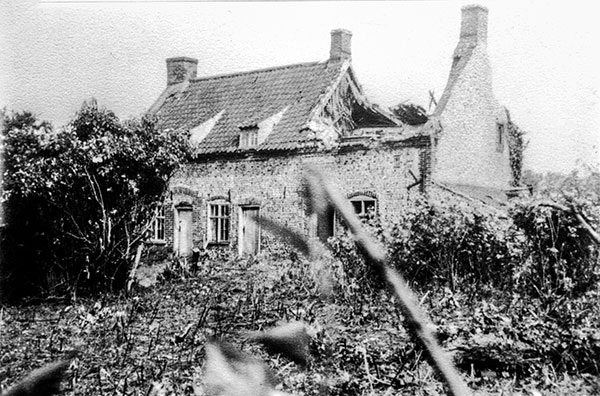 |
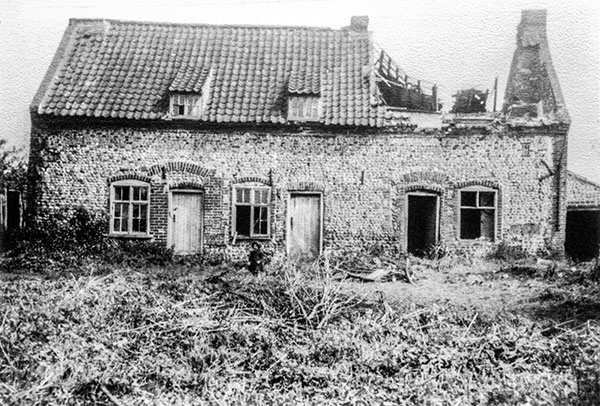 |
Garwood still in the form of three cottages prior to conversion into a single dwelling by Albert James Roy - c.1945 |
|
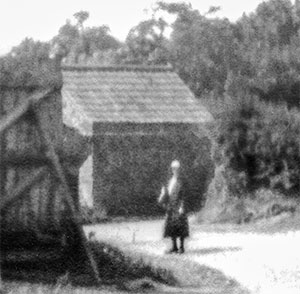
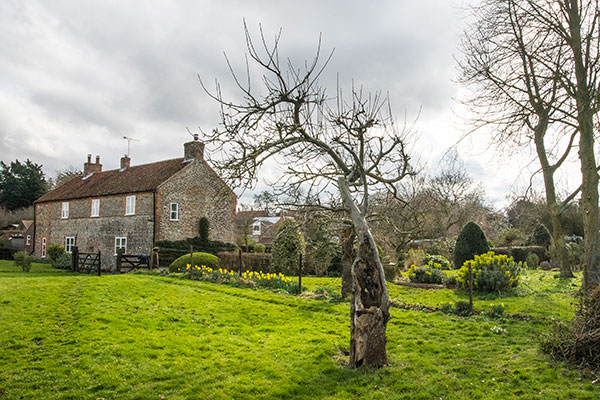 |
Garwood House - 13th March 2022 |
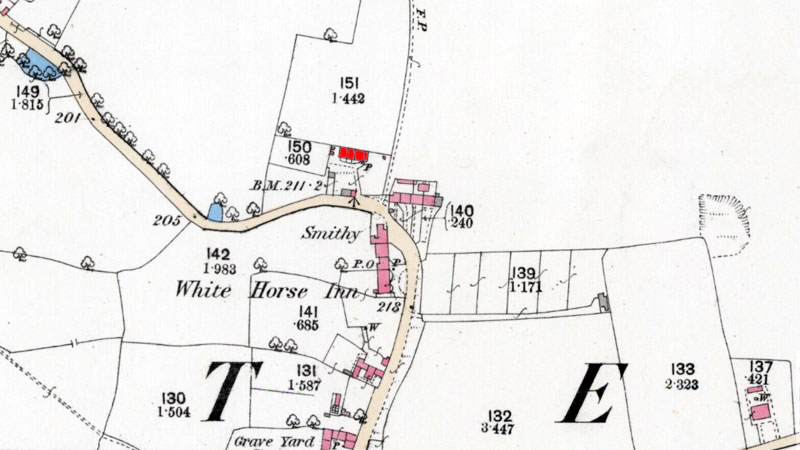 |
O. S. Map 1885 Garwood House shown as being split into 3 cottages Courtesy of NLS map images |
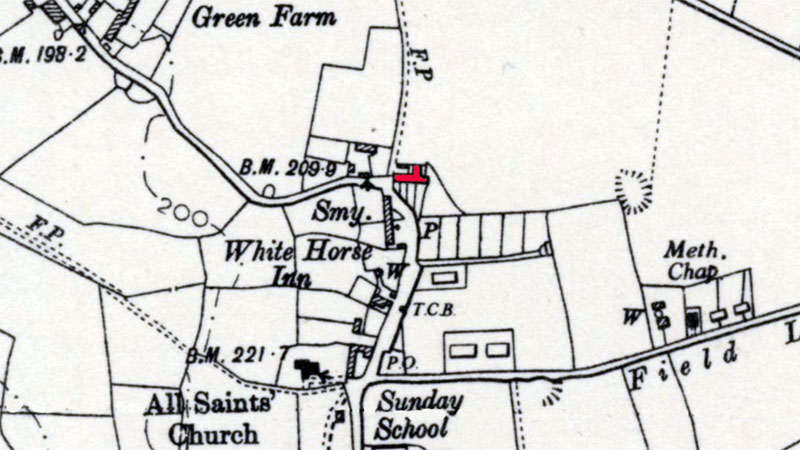 |
O. S. Map 1950 Garwood House shown as being a single dwelling Courtesy of NLS map images |
| c.1739: House built 28th November 1761: John Warne admitted to lands from John Sherman and his wife Ann c.1825: Humphrey Garwood 1833: Humphrey Garwood died 1833: George Garwood 1844: George Garwood died 1844: House occupied by Thomas Pells and others 1844: Frances Garwood
1869: Frances Garwood died 1869: George Garwood 1904: George Garwood died 1904: Possibly executors of George Garwood 1909: Walter William Garwood 1920: Walter William Garwood died
1930: House lying derelict
1980: Janet Darke sold to Thomas Michael Williams and Maureen Patricia Williams |
If you have any memories, anecdotes or photos please let us know and we may be able to use them to update the site. Please
or telephone 07836 675369 |
Website copyright © Jonathan Neville 2021 |